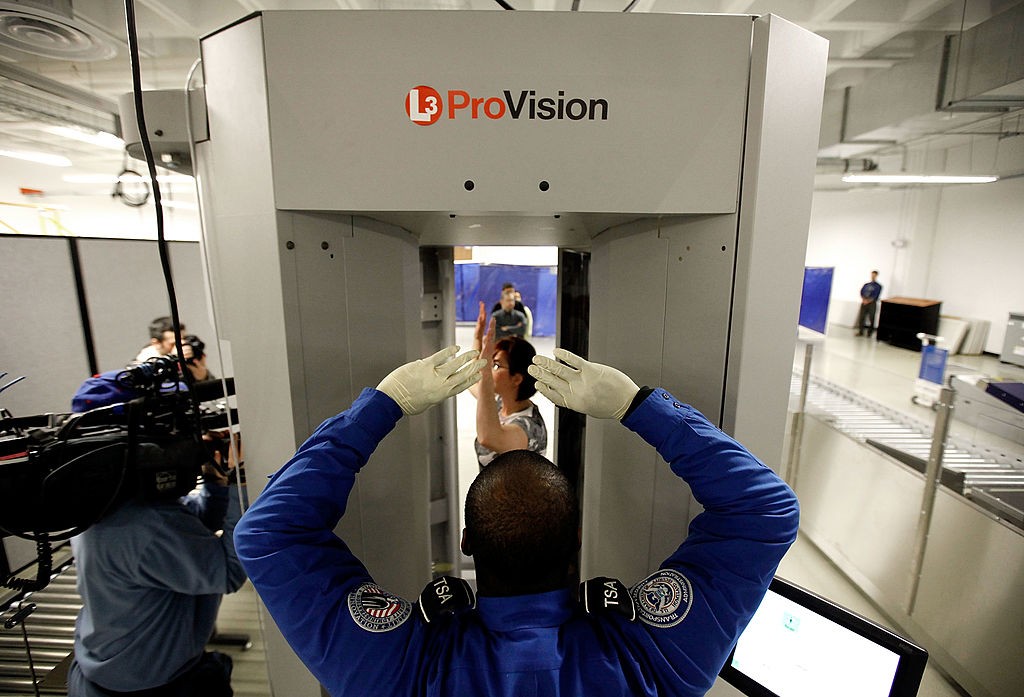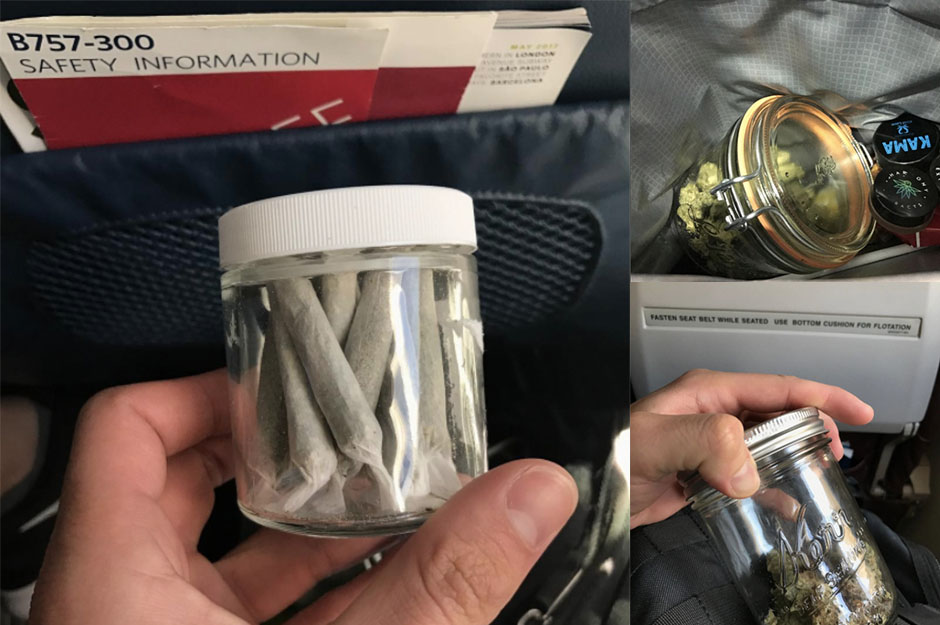Introduction to airport scanners

Airport security is a crucial aspect of modern travel, ensuring the safety of passengers and preventing prohibited items from entering aircraft. Among the many tools used by airport security personnel are airport scanners, which play a key role in identifying potential threats.
Airport scanners are designed to detect various substances and objects that may pose a risk to airline safety. These sophisticated devices use advanced imaging technology to create detailed images of both passengers and their belongings. By generating high-resolution images, airport scanners provide security personnel with valuable information about what may be concealed on an individual or within their luggage.
What to expect at airport security
When passing through airport security, travellers can expect to encounter both metal detectors and body scanners. Metal detectors are typically used to identify metallic objects that could potentially be weapons, while body scanners utilize advanced imaging technology to create a detailed image of an individual’s body.
During the screening process, individuals are required to remove any items that may obstruct the view of the scanner, such as jackets, belts, and shoes. Additionally, travellers are often asked to place their personal belongings, including laptops and electronic devices, in separate bins for further examination.
The basics of airport scanning technology
What to expect at airport security

When arriving at airport security, travellers should be prepared for the procedures and protocols in place to ensure the safety of everyone on board. It is essential to have a clear understanding of what to expect during this process to reduce stress and facilitate a smoother journey.
First and foremost, passengers will encounter metal detectors. These devices are used to identify any metallic objects that may pose a threat. Security personnel will instruct individuals to remove any items that could obstruct the view of the scanner, such as belts, shoes, jackets, and large accessories. These items are placed in separate bins and put through an X-ray machine for closer inspection.
In addition to metal detectors, many airports have implemented body scanners as an additional security measure. These scanners use advanced imaging technology to create detailed images of a person’s body without revealing any sensitive information. Passengers will walk into these machines with their arms raised above their heads or in another instructed position. It is important to remain still during the scanning process.
Furthermore, all personal belongings must be screened separately. This includes laptops, tablets, cameras, and other electronic devices. Travellers are usually required to place these items in plastic bins provided by security personnel for further examination.
It is worth noting that each airport may have slightly different procedures depending on the country and regulations in place. However, by following instructions from security personnel and being prepared ahead of time by packing carry-on bags appropriately, passengers can help expedite the screening process.
Overall, it is crucial for travellers to approach airport security with patience and understanding. By cooperating fully with security measures and ensuring personal belongings are easily accessible for inspection, individuals can contribute to a safer travel environment for all passengers.
The basics of airport scanning technology

Airport scanning technology plays a crucial role in ensuring the safety and security of passengers. These advanced systems are designed to detect potentially dangerous objects, substances, and materials that may pose a threat during air travel.
One of the primary tools used in airport scanners is the metal detector. Metal detectors rely on electromagnetic fields to identify metal objects on a person’s body or in their belongings. When an individual passes through a metal detector, any metallic items they are carrying will disrupt the electromagnetic field, triggering an alarm and alerting security personnel.
In addition to metal detectors, many airports have implemented body scanners as part of their security measures. Body scanners use various technologies, such as millimetre wave imaging or backscatter X-ray technology, to create detailed images of a person’s body without revealing any sensitive information. These scanners can help identify concealed objects or substances that traditional metal detectors may not detect.
Another important aspect of airport scanning technology is the X-ray machines used for screening carry-on bags and personal belongings. X-ray machines produce high-energy electromagnetic waves that penetrate through objects, allowing security personnel to see what is inside. Images produced by X-ray machines provide valuable information about the contents of bags, helping to identify any suspicious items.
Moreover, some airports have implemented advanced explosive detection systems (EDS) to enhance security further. EDS uses sophisticated algorithms and sensing technologies to analyze traces of explosives or explosive residue on luggage. This technology helps to prevent dangerous items from being transported onto aircraft.
Overall, airport scanning technology combines various tools such as metal detectors, body scanners, X-ray machines, and explosive detection systems to create a comprehensive system for identifying potential threats. By continuously advancing these technologies and refining screening processes, airports strive to ensure the safety and well-being of all passengers while minimizing inconvenience and delays during the security process.
How airport scanners detect different substances

Airport scanners use a variety of technologies to detect different substances that may pose a threat to airport security. These systems are designed to identify both metallic and non-metallic items, including explosive materials, drugs, and other prohibited substances.
One common method used by airport scanners is X-ray imaging. X-ray machines generate high-energy electromagnetic waves that pass through objects, creating detailed images of their internal structures. This allows security personnel to identify the contents of bags or packages without physically opening them. X-rays can effectively detect solid objects, such as knives or firearms, but they may not be as effective at identifying certain types of powders or liquids.
In order to overcome this limitation, airports often employ explosives detection systems (EDS) in addition to X-ray technology. EDS utilizes advanced algorithms and sensing technologies to analyze traces of explosives or explosive residue on luggage. By comparing these traces with known signatures of dangerous substances stored in their databases, EDS can accurately detect potentially hazardous materials.
When it comes to detecting drugs like weed, airport scanners rely on the same principles. While X-rays can reveal organic materials inside bags, it may not always be easy for security personnel to differentiate between legal substances and illicit ones like marijuana. This is where the expertise of trained operators becomes crucial in identifying suspicious items based on their characteristics and density.
Additionally, some airports use trace detection systems that analyze swabs taken from passengers’ belongings for the presence of drug particles or explosive residues. These sensitive detectors can pick up even minuscule amounts of substances that may have come into contact with baggage or personal items.
Overall, airport scanners combine a range of technologies, such as X-ray imaging, explosive detection systems, and trace detection systems to detect different substances that could present a security risk effectively. The ongoing advancements in these technologies play a crucial role in enhancing airport security and ensuring the safety of air travel passengers worldwide.
What weed looks like on an airport scanner

When it comes to detecting weed on an airport scanner, the appearance can vary depending on various factors. Weed, also known as cannabis or marijuana, is typically identified through visual cues and characteristics during the screening process.
On an airport scanner, weed may appear as an organic material with irregular shapes and densities. It can often resemble plant matter or bulkier items like clothing or food. The color of cannabis can range from shades of green to brown, depending on its freshness and composition.
During the scanning process, security personnel will carefully analyze the images generated by the scanners to identify any suspicious items. They are trained to recognize the distinct features of weed based on its density, texture, and shape.
While X-ray technology is effective at identifying solid objects, including cannabis, hidden within bags or containers, it may not always provide a clear image when it comes to organic materials like marijuana. In these cases, trained operators rely on their expertise and judgment to distinguish between harmless items and potential threats.
It is important to note that airport security personnel are primarily focused on detecting objects that pose a security risk rather than specifically targeting individuals carrying small amounts of personal marijuana for personal use. However, if a large quantity of weed is detected or packaged in a suspicious manner that suggests intent for distribution or illegal activities, further action may be taken.
In conclusion, weed on an airport scanner may appear as organic material with varying shapes and densities. Trained operators analyze the images generated by scanners to identify any suspicious items based on their expertise and knowledge. It is essential for travellers to be aware of laws regarding marijuana possession in different countries and take necessary precautions while travelling with weed to avoid legal consequences.
What happens if weed is detected

If weed is detected on an airport scanner, the consequences can vary depending on the country and its laws regarding marijuana. In some countries where marijuana is illegal, it can result in legal troubles and potential criminal charges.
When weed is detected by airport security, immediate action will be taken. The security personnel will notify law enforcement authorities who will then determine how to proceed. This can involve further investigation, questioning, or even arrest.
In countries where marijuana is legalized or decriminalized, the consequences may be less severe. However, it’s important to note that even in these cases, there may still be restrictions on traveling with marijuana. It’s crucial to familiarize oneself with the specific laws and regulations of both the departure and arrival destinations.
In addition to legal repercussions, being caught with weed at an airport can also have non-legal consequences. Depending on the severity of the situation, individuals may face penalties from airlines such as denied boarding or even being banned from future flights.
To avoid these potential issues, it’s essential to take precautions while traveling with weed. This includes researching and understanding the laws of both departure and arrival destinations regarding marijuana possession and transportation. If traveling internationally, it’s crucial to be aware of any international drug trafficking agreements that countries may have in place.
It’s advisable not to carry more than the legal limit allowed for personal use at each destination. Additionally, storing weed discreetly in odour-proof containers inside checked luggage rather than carry-on bags can help minimize detection.
Overall, if weed is detected on an airport scanner, individuals should be prepared for potential legal consequences and other non-legal penalties. Taking necessary precautions can help mitigate these risks and ensure a smoother travel experience.
Precautions to take while traveling with weed

When traveling with weed, it is essential to take certain precautions to minimize the risk of getting caught or facing legal consequences. Here are some important steps to consider:
- Research the laws: Before traveling, thoroughly understand the laws and regulations regarding marijuana possession and transportation in both your departure and arrival destinations. This includes knowing the legal limit allowed for personal use in each location.
- Use odour-proof containers: To avoid arousing suspicion, store your weed in discreet, odour-proof containers. This will help minimize the chances of detection by airport scanning equipment and K9 units.
- Pack in checked luggage: It is generally safer to store your weed in checked luggage rather than carry-on bags. This reduces the likelihood of it being discovered during security checks or scans.
- Be mindful of quantity: Do not carry more weed than the legal limit allowed for personal use in each destination. Exceeding these limits can increase the likelihood of being caught and facing legal repercussions.
- Avoid drug trafficking agreements: If travelling internationally, be aware of any international drug trafficking agreements between countries. Some countries have strict policies on drugs and may cooperate with law enforcement from other nations.
- Be discreet: While at the airport, maintain a low profile and avoid drawing attention to yourself or your belongings. Keep in mind that airport security personnel are trained to look for suspicious behaviour.
- Plan alternate methods: If you are travelling to a destination where marijuana is illegal or heavily regulated, consider alternative options such as using CBD products that do not contain THC or researching local laws for medical marijuana authorization.
Remember that while these precautions can reduce the risk of detection, there is no foolproof method when it comes to transporting illegal substances through an airport scanner. It’s important to weigh the potential consequences against the desire to travel with weed and make an informed decision based on personal circumstances and risk tolerance.
By taking these precautions and being well-informed about the laws and regulations, individuals can minimize the chances of encountering legal issues while traveling with weed. However, it is always important to remember that the possession and transportation of marijuana remain illegal in many jurisdictions, so caution should be exercised at all times.
Conclusion and final thoughts

In conclusion, traveling with weed carries inherent risks and potential legal consequences. Airport scanners, equipped with advanced technology, can detect a wide range of substances including marijuana. While it is difficult to predict exactly what weed will look like on an airport scanner, there are certain precautions that can be taken to minimize the chances of detection.
Researching the laws and regulations regarding marijuana possession and transportation in both departure and arrival destinations is crucial before embarking on a journey. Understanding the legal limits allowed for personal use in each location will help prevent exceeding the boundaries and facing legal repercussions.
Using discreet, odor-proof containers to store weed is essential to avoid arousing suspicion during security checks. Packing your stash in checked luggage instead of carry-on bags further reduces the likelihood of detection by airport scanning devices or drug-sniffing dogs.
It is important to be mindful of quantity and not carry more weed than the legal limit allows. Exceeding these limits significantly increases the chances of getting caught.
When traveling internationally, it is imperative to be aware of any drug trafficking agreements between countries and their strict policies on drugs. Cooperation between different nations’ law enforcement agencies could lead to severe consequences if caught transporting illegal substances.
Maintaining a low profile and avoiding drawing attention to oneself or belongings while at the airport is crucial. Remember that airport security personnel are trained to identify suspicious behaviour.
If traveling to a destination where marijuana is illegal or heavily regulated, considering alternative options such as using THC-free CBD products or researching local laws regarding medical marijuana authorization may provide a safer alternative.
While these precautions can reduce the risk of detection, it must be emphasized that there is no foolproof method when it comes to transporting illegal substances through an airport scanner. Personal circumstances and risk tolerance should always be taken into account before deciding whether or not to travel with weed.
In conclusion, individuals must weigh the potential consequences against their desire to travel with weed and make an informed decision based on their unique circumstances. Caution should always be exercised when it comes to the possession and transportation of marijuana, as it remains illegal in many jurisdictions.